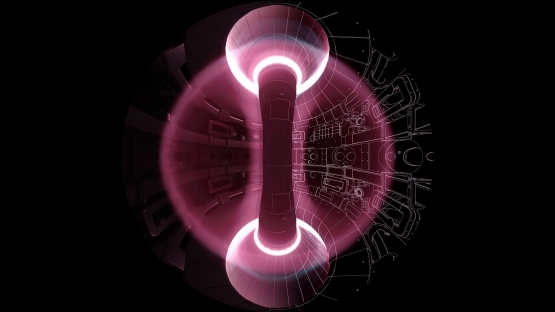More than 100 scientists from around the world met in Shizuoka, Japan, last week to discuss the physics of energetic particles and instabilities in fusion plasmas – the state of matter in which nuclei fuse together releasing huge amount of energy – at the first joint meeting of experts from the two scientific disciplines.
The 16th IAEA Technical Meeting on Energetic Particles in Magnetic Confinement Systems – Theory of Plasma Instabilities confirmed the continuous progress being made in experimental energetic particles research, thanks to a much closer collaboration between experimentalists and theory model developers to achieve better predictive capabilities for future fusion power plants.
Understanding of confinement and transport properties of energetic particles in magnetically confined plasmas is an essential step to reaching the goal of fusion power generation. Energetic particles from fusion reactions play a crucial role for the performance of future fusion reactors by heating and sustaining the plasma, but they may also represent a source of free energy that can drive instabilities – fusion’s enemy number one!
Because of the importance of these topics, the IAEA has organized meetings on energetic particles (since 1989) and plasma instabilities (since 2002) in order to foster the exchange of scientific and technical results on the behaviour of energetic particles in future fusion reactor plasmas. The role of these forums has become increasingly important for the community since mega-scale facilities such as ITER – the international fusion reactor scale experiment – are under construction.
Burning Plasma
The short-term goal of the ongoing fusion R&D is to create and control a burning plasma – the point at which a plasma is primarily heated by the fusion-born energetic particles – which is a key requirement to net fusion power generation.
Although significant fusion power has been generated for short periods in the laboratory, a burning plasma has never been created, and this is exactly the raison d'être of the ITER Project. The performance of a fusion device is measured by Q, the ratio between the fusion power and the power used to heat the plasma. ITER is designed to give Q at least 10, and Q > 15 would be needed in a fusion power reactor.
“Advances in burning plasma-related science and technology will pave the way to practical fusion energy,” said Yasuhiko Takeiri, Director General of Japan’s National Institute for Fusion Science. “We have set energetic plasma physics as one of our top priority research areas,” he added.
ITER and next step reactors will operate in burning plasma conditions that cannot be comprehensively reproduced in present devices. Therefore, the meeting provided an opportunity to share the latest theoretical and computational physics results that can be used to predict the behaviour of fusion plasmas in ITER and future fusion power reactors, as well as help identify operational scenarios, and give guidance for the optimised design of such machines.
The conceptual design studies of a demonstration fusion power plant (DEMO) are under way in many countries and will be the subject of an IAEA DEMO Programme Workshop scheduled for October 2019.







